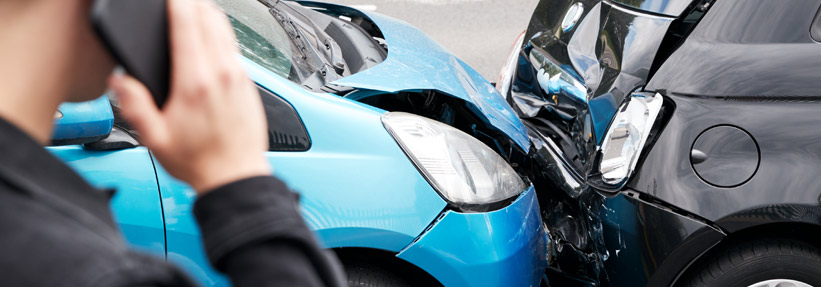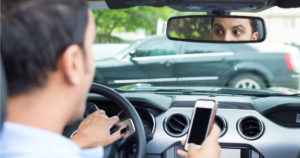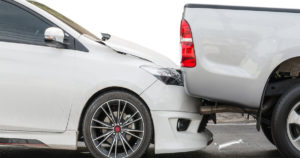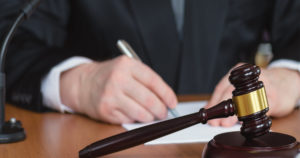Baltimore Car Wreck Attorneys
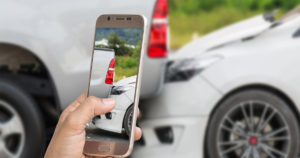
When drivers get behind the wheel, they might still be involved in car wrecks through no fault of their own. When this occurs, motorists should reach out to our Baltimore Auto Accident Lawyers for assistance. Another driver’s negligence or misconduct can turn anyone’s life upside down, and it is important to hold reckless or careless drivers accountable, along with potential third parties that add to the damage.
How Often Do Car Wrecks Occur in Baltimore?
The city of Baltimore sits within Baltimore County, and car wrecks in the area spread far from the city. In 2019, the county experienced 48 fatal car wrecks. In the city itself, there were 41 fatal wrecks involving 61 vehicles and 44 deaths. Additionally, 23 pedestrians died in these crashes, indicating that city driving presents problems for more than just motorists. With a population just under 600,000, pedestrians walk city streets every day, use public transit, and encounter dangerous drivers.
Baltimore serves as a hub for traffic passing through Maryland. Considering that the state experienced over 500 traffic deaths in the same period, it stands to reason that Baltimore drivers should be even more careful because around 10 percent of the state’s population lives in the city.
Are There Unique Issues Facing Drivers in Baltimore?
Baltimore is a historic city with narrow streets and a perimeter highway that approaches the Atlantic Ocean on its eastern edge. Unfortunately, Interstate 695 is a massive ring road that does not bring drivers near the center of the city. Interstate 83 travels through the middle of the city and dead ends near the Inner Harbor. Interstate 395 splits off Interstate 95, but it stops in the middle of the city. Interstate 895 takes drivers under the harbor, but it connects with Interstate 95 and turns away from the city.
Interstate 97 enters the area from southern Maryland, but it is cut off by Interstate 895 and Interstate 695. Drivers hoping to reach the airport can use Interstate 195, but they must traverse busy Maryland State Route 295, Interstate 95, or Interstate 895 to get there.
Aside from the confusing network of highways and surface streets that can leave drivers disoriented, the majority of the city is packed with streets that do not always follow a traditional block pattern. Certain blocks have several extra roads or alleys, whereas others serve as dead ends, turn in odd directions, or cut through in a manner inconsistent with modern urban planning.
Johns Hopkins University and its partner hospital generate traffic every day. The University of Maryland Medical Center and Union Memorial Hospital produce traffic of their own, and Notre Dame University of Maryland generates even more traffic north of the downtown area. Across the street is Loyola University of Maryland with its student body, faculty, and support staff commuting every day.
Camden Yards and M&T Bank Stadium sit on either side of I-395 as it turns into Martin Luther King Jr. Boulevard, making that exit one of the busiest places in the city for most of the year. Moreover, a sudden end to the highway causes traffic to slow quickly and back up as it enters the region closest to the Inner Harbor.
A massive range of historic buildings invites tourists throughout the year, and city parks often cut off otherwise useful surface streets. Heavy rains and even hurricanes can create slick road surfaces, and heavy snow or ice in the winter makes narrow streets even more difficult to drive.
What Causes Car Wrecks in Baltimore?
Car wrecks most often occur when drivers make poor decisions or fall victim to others who are not using their best judgment. Common causes of car wrecks include the following issues:
Distracted driving
Distracted drivers experience three types of distractions: visual, cognitive, and manual. These distractions can take hold of a driver at any time. On the crowded streets of Baltimore, drivers can experience visual distractions as they check their phones for directions or to read a map. If the driver is receiving text messages, they are both visually and cognitively distracted by the situation.
Holding a mobile device to check a text message or read an email also represents a manual distraction. Drivers cannot keep both hands on the wheel and maintain complete control of the vehicle while using mobile devices, eating, drinking, grooming, or adjusting the controls. Drivers must focus on the road ahead of them to avoid wrecks and cut back on distractions.
Drunk/impaired driving
Drunk driving is relatively simple to avoid if residents are willing to use taxis or ridesharing services while partying in town. Walking to and from each location is safer than driving, and bringing a designated driver makes it easier to get home after a long night. Drivers must also be aware of how their prescription medications interact with alcohol. Motorists can be pulled over for driving while intoxicated (DWI) if they are impaired by any medication.
Aggressive driving
Aggressive driving in Baltimore can lead to far more serious wrecks because of the tight road configuration and the fact that residents often park on the street. There is very little room for aggressive maneuvers. Therefore, drivers should slow down, relax, and keep both hands on the wheel. It is difficult to cut off other vehicles and avoid a wreck, and it is even more challenging to make last-second turns. If drivers miss a turn or feel frustrated by another motorist, they should take an alternate route or leave a greater stopping distance to avoid rear-end collisions.
Drivers can avoid road rage situations by keeping control of their anger and never redirect their aggression toward another driver. If necessary, drivers should pull over and cool off before continuing any journey behind the wheel. If another driver is exceptionally upset about a non-contact incident on the road, it is best to stay away from them and call non-emergency services for assistance. One should never confront an angry driver.
Drowsy driving
Drowsy drivers often do not realize how tired they are when they get behind the wheel. They know they are sleepy, but they believe they can arrive home safely. Given the convoluted road patterns in Baltimore, it is more difficult than it would otherwise be to drive while drowsy. Aside from the fact that drivers do not have good reflexes when drowsy, they cannot judge the narrow streets or tight turns in the middle of the city.
Speeding
Speeding in the Baltimore area is even more dangerous than it is throughout the rest of the United States. Drivers come to an abrupt halt in several parts of the city the moment they exit the highway, and they often do not realize that they are transitioning onto a surface street. Speeding on narrow city blocks makes the roads more dangerous for pedestrians, and even someone who is pulling out of a parking spot could be involved in a serious wreck because of a collision with a speeding driver.
Inexperienced drivers
The Centers for Disease Control and Prevention (CDC) curates car wreck data for all 50 states, and its 2018 breakdown shows that teens and young adults account for over 50 percent of the cost of traffic deaths in Maryland. Recommendations include raising the learner’s permit age to 16 and requiring teens to hold that permit for 12 months before graduating to a license.
Inexperienced drivers are not just teenagers with only a few months of scattered experience. College students moving to the city for school have very little experience compared to other adults, and recent graduates across the city start commuting without a good idea of how to remain safe in city traffic.
Inclement weather
Inclement weather causes wrecks throughout the year, and it is the driver’s responsibility to understand the prevailing weather conditions and avoid wrecks as much as possible. Drivers making erratic maneuvers in rainy conditions are violating their duty of care for other drivers. Drivers are also responsible for avoiding the roads when ice and snow blanket the landscape. Even on treated or clear road surfaces, drivers must exercise extreme caution.
Wrong-way driving
Drivers who are unfamiliar with the city or a particular area could easily turn down the wrong street or go the wrong direction on a one-way road. Road signs can be confusing, and drivers might use the wrong ramp because they are genuinely confused. These situations occur even more often at night when drivers cannot absorb their surroundings and make decisions based on additional information.
What Types of Car Wrecks Involve Drivers?
Drivers must understand they could be involved in a car wreck even if they are driving perfectly. The following common types of car wrecks are listed to offer some insight into how they occur, and drivers may need to change their driving habits so that they do not hurt themselves, passengers, or other drivers.
Rear-end accidents
A fender-bender can easily occur in Baltimore because of the level of congestion and narrow streets. Drivers must keep their eyes on the road at all times and slow down as much as possible. These wrecks occur most often as drivers approach yet another stop sign or red light. At the same time, drivers who are transitioning from a fast-moving interstate to a surface street must slow down quite a bit to avoid a fender-bender as other vehicles attempt to rejoin city traffic.
T-bone incidents
A T-bone wreck is easy to cause in Baltimore when turning onto another side street. Someone is likely crossing the intersection, and drivers should look out for other vehicles before making a right turn. Visibility can be limited in the city, as large buildings make it difficult to check for traffic while turning, and some intersections include divided roads where one lane is moving, and the other is not. Drivers might misjudge which direction a one-way street moves, or they might turn left across traffic without realizing other drivers are not required to stop.
Head-on collisions
Car wrecks that occur head-on are typically the most deadly and terrifying for everyone involved. These wrecks occur most often on Baltimore streets when drunk or drowsy drivers lose control of their vehicles. A wrong-way driver can easily crash into another vehicle on a one-way street, or reckless drivers who are passing on narrow city streets might misjudge how much distance they need to complete that maneuver.
Multi-vehicle accidents
Tight streets and congestion can lead to multi-vehicle wrecks. In these cases, drivers might be struck at low speeds as one car crashes into the next. These pileups may not amount to major damages or injuries, but they involve complex liability. Generally, the driver in the back of a pileup was the last to stop, and every victim has a claim against that driver. If a wreck involves parked vehicles, drivers who are sitting in those vehicles may file a claim against the responsible driver. Owners of unoccupied vehicles may also file claims for property damage.
Can I Sue for Compensation After a Car Wreck in Maryland?
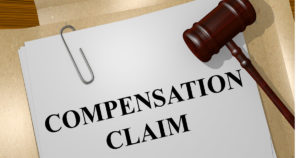
Medical debt
Medical debt can increase after a car wreck. The victim may not be prepared to pay astronomical medical bills after they require an ambulance ride, emergency care, surgeries, and medications. Hospitals, medical groups, and other professionals seek payment as soon as services are rendered without considering how the patient will pay.
Future medical care
Future medical care becomes a point of contention when it is clear that the victim requires physical therapy, medical equipment, counseling, medications, or specialty care. Paying for these things can tax the victim’s finances and conscience. A medical expert can write an estimate of how much it costs to attain maximum recovery, or the victim’s current doctor can ask the hospital or office to create an estimate given all the treatment that was already prescribed.
Lost income
Everyone loses income the moment they are involved in a car wreck, and income loss continues until they can get back to work or recover disability compensation. Even if the victim can go back to work, they may no longer possess the earning potential they once had.
Lost earning potential
Earning potential changes if the victim’s injuries make it impossible for them to continue working for years or even decades. For example, a young lawyer who would have likely made partner and earned hundreds of thousands of dollars a year must seek compensation that makes up for the difference in what they can earn now and what they believe they should have earned.
Emotional anguish
As victims deal with their emotions, lawyers take into account expert statements and the victim’s description of their suffering when requesting damages.
Pain and suffering
The pain felt by the victim because of their injuries or recovery is a compensable damage, but the victim’s lawyer must determine how much money to seek.
Punitive damages
Punitive damages are warranted when it is clear that violent, egregious, or malicious conduct resulted in the victim’s injuries or death. The court must believe it is necessary to punish the defendant further, and even though punitive damages in Maryland are rare, they are typically awarded as a multiple of the compensatory damages.
Wrongful death
If someone died in the wreck, their family is eligible to file a wrongful death claim. Wrongful death claims help families pay off medical debts and replace the decedent’s income. The beneficiaries of the estate can file suit seeking damages for their anguish, and they may request punitive damages at trial. In addition, the lawsuit can recover the cost of burial and funeral services, along with legal fees.
How can a Car Wreck Attorney in Baltimore, Maryland Help?
Everyone needs a car wreck lawyer if they are ready to file suit. A lawyer will begin collecting evidence, create a claim, and communicate with insurance companies or other stakeholders. A lawyer also determines if another driver was responsible, if a business caused the wreck, or if the driver of a large vehicle played a part in the wreck. A government agency can also be held liable if it caused the wreck.
A lawsuit often begins with a settlement negotiation that may keep the case out of court. Evidence is presented, and the defendant or their lawyer will offer a total they believe is fair given the devastation caused during the wreck. Victims are welcome to accept these offers and receive payment. Some settlement offers, however, are so low that they cannot begin to cover the damages caused. A lawyer, at that point, will move to go to trial.
Trials allow lawyers to petition for punitive damages and reveal all the evidence gathered during their investigation. If the trial ends in a favorable judgment, the victims receive payment. The lawyer might also appeal an unfavorable judgment believing that the appeals process will result in a larger award. Victims should remain in contact with the lawyer as much as possible and remain abreast of the situation at all times. Every case is very different, and victims must work with their lawyer to understand what their best options are.
Our Car Wreck Lawyers in Baltimore Help Victims in Their Recovery
If you were hurt in a car wreck or lost a loved one, reach out to the Baltimore Car Wreck Lawyers at LeViness, Tolzman & Hamilton for assistance. Our experienced legal team will review your case and secure the maximum financial compensation you deserve. We will not stop fighting for you until we have your complete satisfaction. Call us today at 800-547-4LAW (4529) or contact us online for a free consultation.
Our offices are conveniently located in Baltimore, Columbia, Glen Burnie, and Prince George’s County, where we represent victims throughout Maryland, including those in Anne Arundel County, Carroll County, Harford County, Howard County, Montgomery County, Prince George’s County, Queen Anne’s County, Maryland’s Western Counties, Southern Maryland and the Eastern Shore, as well as the communities of Catonsville, Essex, Halethorpe, Middle River, Rosedale, Gwynn Oak, Brooklandville, Dundalk, Pikesville, Parkville, Nottingham, Windsor Mill, Lutherville, Timonium, Sparrows Point, Ridgewood, and Elkridge.

